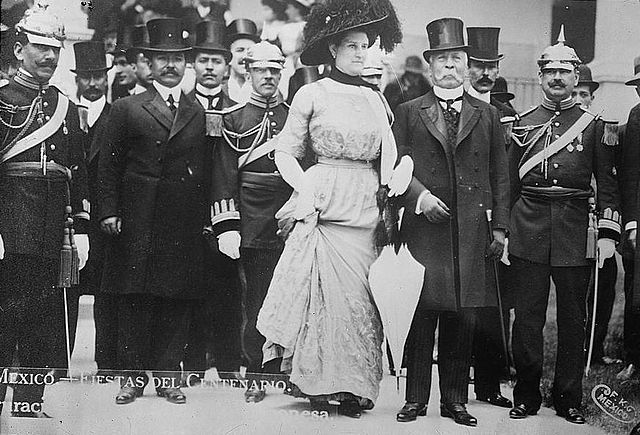 |
| Porfirio Díaz |
Remembered mainly as an iron-fisted dictator whose political cronyism and suppression of the rights of Mexico’s poor and Indian peoples led to the Mexican Revolution, Porfirio Díaz was a shrewd and canny ruler who used persuasion and cooperation as much as brute force to retain power.
His regime made major strides in modernizing the Mexican economy and integrating it into the rapidly expanding structures of global capitalism. The period of his rule, known as the Porfiriato, was an era of major social and economic transformations.
Under the banner of positivism, the Díaz regime systematically promoted capitalist development via free trade, foreign investment, the expansion of transport and communications infrastructure, and an expanding export economy (especially mining), while at the same time suppressing the rights of citizenship among the poor and disfranchised and the rapidly growing middle and professional classes.
  |
It was the mounting frustration of the latter classes at being shut out of the nation’s political life, combined with growing landlessness, poverty, unemployment, and desperation among the majority, that ultimately led to the collapse of his regime.
Master of the strategy of pan o palo (“bread or stick,” with “bread” signifying cooptation and “stick” signifying violent suppression of dissent), Díaz dominated Mexico’s political life for more than a third of a century, while the social dynamics set in motion by his rule laid the groundwork for the decade-long civil war and social revolution that followed his overthrow in 1911.
Born in Oaxaca in 1830, the son of a mestizo blacksmith father and half-Mixtec mother, José de la Cruz Porfirio Díaz received a rudimentary education, dabbling in studies for the priesthood and law before finding his calling in the military.
 |
| Porfirio Díaz and his wife Carmen Romero Rubio |
Allied with Benito Juárez and the Liberals, Díaz distinguished himself as a military commander in the War of the Reform and the resistance against French intervention, in which conflicts he gained wide fame and a large personal following. Defeated in the presidential elections of 1871, Díaz charged fraud and launched an abortive rebellion against the Liberal Juárez government.
In March 1876, five years after his first uprising, Díaz issued his Plan de Tuxtepec, once again calling for “no reelection.” In November 1876, in the so-called Revolution of Tuxtepec, his forces occupied Mexico City and overthrew the elected government of Sebastián Lerdo de Tejada.
Under the positivist credo of order and progress and following the counsel of his coterie of advisers dubbed los científicos (loosely, “the scientific ones”), the Díaz regime endeavored to modernize every aspect of government and the economy while retaining a tight grip on the reins of political power.
   |
Foreign investment and economic growth surged, while a host of new inventions became integrated into Mexican life, including steam-powered electric generating plants, the telephone and telegraph, railroads, electric trams, manufacturing plants, and related modern technologies.
The machinery of state was overhauled and streamlined, while the country’s public finances were put on a firm footing under Secretary of the Treasury José Limantour.
To suppress rural banditry and organized dissent, Díaz expanded the Rurales, or rural police force, created by Juárez in 1872 and under Díaz comprised, in the main, of criminals and bandits put on the government payroll.
The regime waged a series of wars against recalcitrant Indians, especially the Apache and Yaquí in the north. Díaz’s political cronies dominated the nation’s political life at all levels, while organized dissent of any kind was either gingerly coopted or ruthlessly crushed.
By the early 1900s disenchantment with the regime mounted among both the rapidly expanding middle class and the masses of increasingly impoverished and desperate rural and urban dwellers.
The regime’s demise came in 1911, following an uprising by wealthy Liberal landowner Francisco Madero, which in turn sparked the decade-long Mexican Revolution. Overthrown, the ailing 81-year-old Díaz was forced into exile. He died in Paris a few years later.